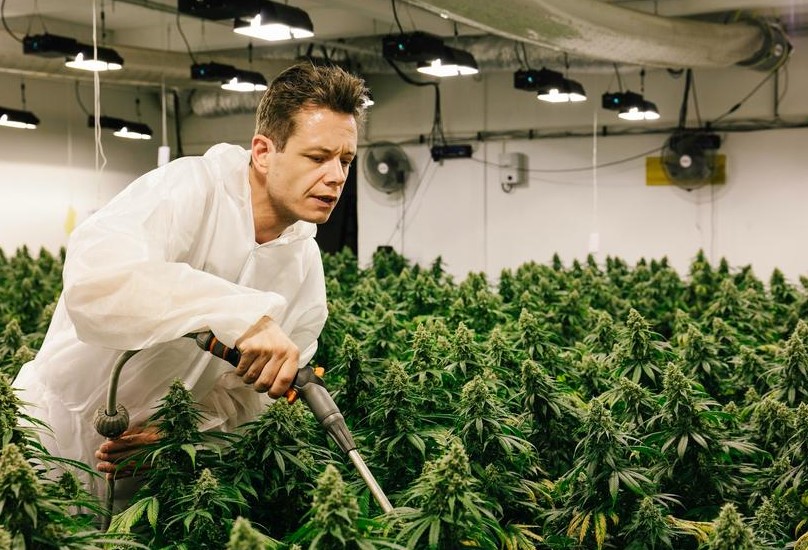The production of CBD (cannabidiol) has gained substantial popularity due to its therapeutic benefits, but it’s essential to examine the environmental impact of CBD flower production. As the demand for CBD products rises, so does the need to understand and mitigate the environmental consequences associated with their cultivation. This article explores how CBD flower production affects the environment and what can be done to minimize its impact.
Understanding CBD Flower Production
CBD is derived from cannabis plants, specifically from strains that are low in THC (tetrahydrocannabinol), the psychoactive component of cannabis. The flower, or bud, of these plants is where CBD Flower is most concentrated. The production process typically involves growing the cannabis plants, harvesting the flowers, and then extracting CBD from them. Each stage of this process can have varying environmental impacts.
Water Usage
One of the most significant environmental concerns related to CBD Flower production is water consumption. Cannabis plants require a substantial amount of water to thrive, and this need increases during their flowering stage. In regions where water is scarce, the high water demands of cannabis cultivation can exacerbate existing water shortages. Furthermore, the need for irrigation can lead to the depletion of local water sources, affecting both ecosystems and communities.
Soil Health
The cultivation of CBD flowers can also impact soil health. Intensive farming practices, such as monoculture, where only one type of crop is grown over large areas, can lead to soil degradation. This practice depletes essential nutrients from the soil and increases the need for synthetic fertilizers and pesticides, which can further degrade soil quality and contribute to pollution. To mitigate these effects, sustainable farming practices, such as crop rotation and organic farming, can be employed to maintain soil health.
Pesticides and Fertilizers
The use of synthetic pesticides and fertilizers in CBD flower production can have detrimental effects on the environment. Pesticides can harm beneficial insects and disrupt local ecosystems, while fertilizers can lead to nutrient runoff, which can cause water pollution. Organic farming practices, which avoid the use of synthetic chemicals, can reduce these negative impacts. Additionally, integrated pest management (IPM) techniques can help control pests with minimal environmental harm.
Energy Consumption
The energy required for indoor cultivation of CBD flowers is another area of concern. Indoor grow operations, which use artificial lighting and climate control systems, can consume a significant amount of energy. This high energy consumption often results in increased greenhouse gas emissions, particularly if the energy comes from non-renewable sources. Shifting towards renewable energy sources, such as solar or wind power, can help reduce the carbon footprint of indoor CBD cultivation.
Waste Management
The production of CBD flowers generates various types of waste, including plant trimmings and packaging materials. Proper waste management practices are crucial to minimizing the environmental impact of CBD production. Composting plant waste can reduce landfill use and provide nutrients for future crops, while recycling packaging materials can help reduce the overall environmental footprint. Implementing a zero-waste approach in CBD production can further enhance sustainability efforts.
Carbon Footprint
The carbon footprint of CBD flower production encompasses all the greenhouse gases emitted throughout the production process. This includes emissions from energy use, transportation of materials, and other operational aspects. Reducing the carbon footprint involves optimizing energy use, minimizing transportation needs, and adopting sustainable practices. Companies can also consider offsetting their carbon emissions by investing in environmental projects or supporting carbon capture initiatives.
Sustainable Practices
To address the environmental impact of CBD flower production, various sustainable practices can be adopted. These include:
- Organic Farming: Using organic methods to grow CBD flowers can minimize the use of synthetic chemicals and promote soil health.
- Water Efficiency: Implementing water-saving irrigation systems and practices can help reduce water consumption and preserve local water resources.
- Renewable Energy: Transitioning to renewable energy sources for indoor cultivation can reduce greenhouse gas emissions and lower the carbon footprint.
- Waste Reduction: Adopting waste reduction strategies, such as composting and recycling, can minimize environmental impact and promote sustainability.
- Education and Advocacy: Educating growers and consumers about sustainable practices and advocating for environmental responsibility can drive positive change within the industry.
Conclusion
As the CBD market continues to grow, it is crucial to consider and address the environmental impact of CBD Flower UK production. By adopting sustainable practices and promoting environmental responsibility, the industry can minimize its ecological footprint and contribute to a more sustainable future. Through collective efforts, it is possible to enjoy the benefits of CBD while also protecting the planet for future generations.
